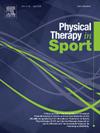The influence of patient gender on exercise prescription in ACL reconstruction rehabilitation
IF 2.2
3区 医学
Q1 REHABILITATION
引用次数: 0
Abstract
Objective
To assess differences in physical therapists’ exercise prescription and confidence in return-to-sport readiness between girl and boy patients undergoing rehabilitation post-ACLR.
Design
Cross-sectional survey.
Methods
115 physical therapist responses were collected in an electronic survey. Demographics were captured and therapists were asked to assess the appropriateness of exercises and intensity of prescription for case vignettes of an adolescent boy and girl at four different phases of post-ACLR rehabilitation. Wilcoxon signed-rank tests were performed for paired comparisons among physical therapists’ responses to the boy and girl vignettes.
Results
Physical therapists' exercise prescription and confidence in return-to-sport readiness differed for the boy and girl vignettes post-ACLR, specifically during the return-to-sport phase. When exercise was performed with perceived ideal form, physical therapists indicated it was more appropriate to maintain or progress the exercise for girls and had more confidence in girls' ability to return-to-sport. When the exercise was performed with perceived poor form, physical therapists indicated it was more appropriate to maintain or progress the exercise for boys and had more confidence in boys’ ability to return-to-sport.
Conclusion
A patient's gender may influence exercise prescription and return-to-sport expectations of physical therapists, which may contribute to disparities in patient outcomes between genders post-ACLR.
ACL重建康复中患者性别对运动处方的影响。
目的:评估物理治疗师的运动处方和重返运动准备信心在女孩和男孩接受aclr后康复患者之间的差异。设计:横断面调查。方法:对115名物理治疗师进行电子问卷调查。统计数据被捕获,治疗师被要求评估练习的适当性和处方强度的案例小插曲在aclr后康复的四个不同阶段的青春期男孩和女孩。对物理治疗师对男孩和女孩小片段的反应进行配对比较的Wilcoxon sign -rank检验。结果:物理治疗师的运动处方和对重返运动准备的信心在aclr后男孩和女孩的小片段中有所不同,特别是在重返运动阶段。当运动以理想的形式进行时,物理治疗师表示,对女孩来说,保持或推进运动更合适,并且对女孩重返运动的能力更有信心。当运动表现不佳时,物理治疗师表示,对男孩来说,保持或推进运动更合适,并且对男孩重返运动的能力更有信心。结论:患者的性别可能会影响物理治疗师的运动处方和重返运动的期望,这可能导致aclr后患者预后的性别差异。
本文章由计算机程序翻译,如有差异,请以英文原文为准。
求助全文
约1分钟内获得全文
求助全文
来源期刊

Physical Therapy in Sport
医学-康复医学
CiteScore
4.50
自引率
8.30%
发文量
125
审稿时长
39 days
期刊介绍:
Physical Therapy in Sport is an international peer-reviewed journal that provides a forum for the publication of research and clinical practice material relevant to the healthcare professions involved in sports and exercise medicine, and rehabilitation. The journal publishes material that is indispensable for day-to-day practice and continuing professional development. Physical Therapy in Sport covers topics dealing with the diagnosis, treatment, and prevention of injuries, as well as more general areas of sports and exercise medicine and related sports science.
The journal publishes original research, case studies, reviews, masterclasses, papers on clinical approaches, and book reviews, as well as occasional reports from conferences. Papers are double-blind peer-reviewed by our international advisory board and other international experts, and submissions from a broad range of disciplines are actively encouraged.
 求助内容:
求助内容: 应助结果提醒方式:
应助结果提醒方式:


